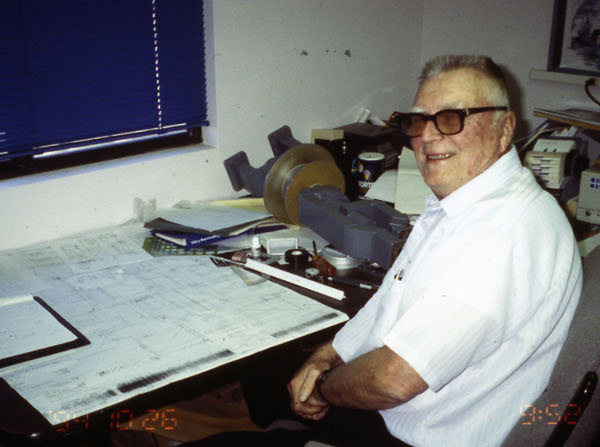Gene Mueller: 1927-2016
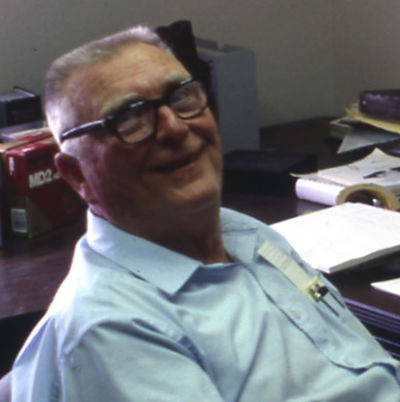
Dr. Eugene A. Mueller, one of the original architects and chief engineer of the CHILL research weather radar system, passed away on 15 February 2016. He made significant contributions to the field of radar meteorology over a span of four decades. Gene’s technical education began in the U. S. Navy during the final stages of World War II. A quick learner, the Navy promptly designated him an instructor in their radar school. One of the radars that he taught was the 3 cm wavelength APS-15A airborne search system. After discharge from the Navy, he completed both his BS and MS degrees in Electrical Engineering at the University of Illinois. While at the U of I, he came across a job announcement from the Illinois State Water Survey (ISWS) regarding a project to map rainfall using a surplus APS-15A radar. Gene was hired based on his Navy experience with this radar. At that time, radar data was displayed on an analog cathode ray tube (CRT), with stronger echoes producing brighter areas on the phosphorescent screen. The data was archived by photographing the CRT. To better resolve the recorded signal intensity levels, Gene developed hardware that made a pre-programmed step change to the receiver sensitivity at the end of each antenna revolution. The ISWS APS-15A operating in this stepped attenuator mode captured the first observations of a tornadic hook echo on 9 April 1953.
As the ISWS continued to experiment with radar-based rainfall mapping, it became apparent that lack of knowledge of the distribution of rain drop diameters introduced major uncertainty into the interpretation of the radar data. To address this problem, Gene designed and built a camera system that could automatically collect images of raindrops with diameters between 0.5 and 5 mm within a one cubic meter sample volume. His camera system design was sufficiently robust to support the collection of drop size distribution data in contrasting climatic regions such as Alaska and Indonesia. Gene’s development of the drop camera equipment, along with the microwave backscattering and absorption calculations from the photographic drop measurements, became the basis of his 1966 University of Illinois Ph. D. thesis.
In the mid-1960’s, the National Science Foundation announced a program to fund the development a 10 cm wavelength research weather radar for use in the National Hail Research Experiment (NHRE). Two proposals to develop such a radar were independently submitted by both the ISWS and the University of Chicago. NSF was willing to provide funding for a single radar jointly developed by the two institutions. The resultant radar was named CHILL to recognize its foundations from both the university of CHicago and the university of ILLinois / ISWS. Much of the theoretical support for the radar’s required performance was provided by University of Chicago Prof. David Atlas while Gene lead the engineering effort to construct the radar at the University of Illinois Willard Airport at Champaign.
After the NHRE program ended in the early 1970’s, Gene took the CHILL radar on a series of over ten remote deployments to support atmospheric science field projects at sites ranging from Oklahoma to Montana. Beyond the technical supervision of radar operations during these projects, Gene maintained a keen interest in the physical interpretations of the data presentations. He found the organized echo patterns presented by groups of flying insects and birds to be particularly intriguing.
In the late 1970’s Gene adapted the CHILL to make exploratory dual polarization radar measurements. Prof. Tom Seliga of Ohio State University had proposed that the preferential oblate shape assumed by larger diameter raindrops should provide a small, but measurable increase in the received echo strength when a radar was operating at horizontal vs. vertical polarization. To test this theory, Gene adapted a motorized switch to the CHILL waveguide system. This arrangement allowed the transmitter power to be selectively routed to either the horizontal or vertical polarization ports on the antenna. Prof. Seliga’s student, V. N. Bringi, processed the CHILL data received in the alternating horizontal and vertical polarization blocks. His results confirmed the existence of the expected enhancement to the horizontally-polarized signal level when oblate raindrops were present. The subsequent installation of a magnetic ferrite-based waveguide switch allowed the CHILL’s polarization state to be alternated on a pulse to pulse basis. In 1984 Gene applied this switching flexibility to the development of a transmitted pulse sequence and associated signal processing technique to extract the phase difference between the horizontally and vertically polarized received signals (ϕdp). The utility of dual polarization weather radar measurements has become well established since Gene’s pioneering efforts; this technology has now been adopted for operational use in the NWS radar network.
In 1990, NSF transferred the CHILL radar from the University of Illinois to Colorado State University. Gene accompanied the radar on its relocation to an operating site next to the Greeley Weld County Airport. At CSU, Gene oversaw the continuing technical advancement of the radar (now known as CSU-CHILL). Notable radar improvements made at CSU included the adaptation of a dual transmitter configuration in which separate, identical transmitters were used to generate the horizontally and vertically polarized signals. Gene also developed the specifications for the custom-built dual polarization antenna that was acquired in 1994. He retired from his position as CSU-CHILL radar senior engineer in July 1995 and continued to live at his home in Loveland, Colorado.
Bernice, Gene's wife of 63 years, passed away in 2013. He is survived by their daughter, Cindy Mueller and son, Joseph Mueller, five grandchildren and five great grandchildren. He was also grandpa to an extended Vietnamese family. They expect to retrace Gene's steps for a fishing trip to White Iron Lake in Ely, Minnesota next fall.
Gene will be missed as both a mentor as well as a friend.
Steven Rutledge, V. Chandrasekar, V. N. Bringi, David Brunkow, Jim George, Francesc Junyent, Robert Bowie, Kenneth Pattison, Cindy Mueller, and Patrick Kennedy
Selected historical photographs
The mid-1980's era image below came from the Illinois State Water Survey archives. It was taken in the operator area at the rear of the semitrailer that housed the single FPS-18 transmitter that was originally used with the CHILL radar. Gene is on the left conversing with fellow CHILL radar engineer David Brunkow.
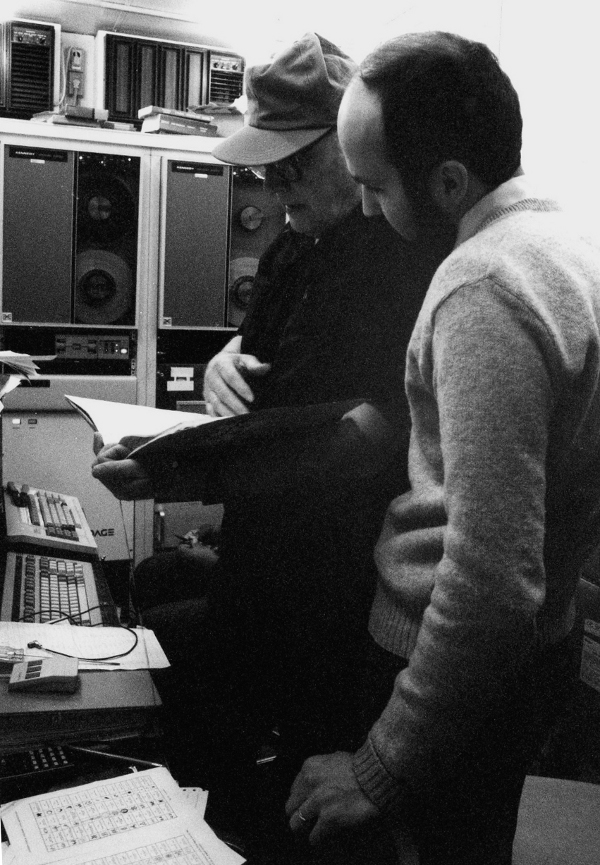
The following photograph was taken at the CHILL radar's original home base at the University of Illinois Willard airport in Champaign. Gene is being interviewed as a part of a field experiment that was done in the summer of 1986. The radome is of an early design with an airlock constructed from radome fabric and inflation blower ducts that entered the side of the dome at an above-ground level.
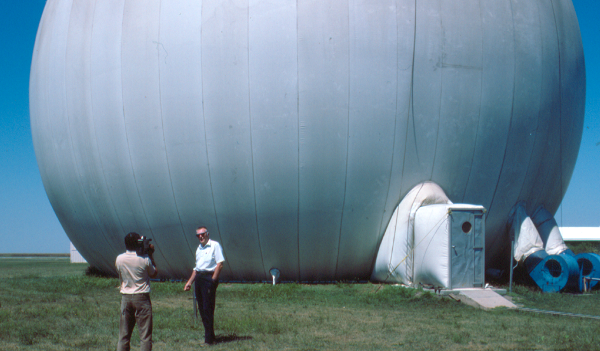
The last three photographs were taken after the CHILL radar was relocated to Colorado State University in 1990. One primary upgrade made to the radar at CSU in the early 1990's was the acquisition of a higher performance dual polarization antenna. To fully exploit the improved inter-channel isolation of this antenna, the polarization switch was removed and a second transmitter was added. (i.e., separate, identical transmitters were connected to the antenna's horizontal and vertical polarization ports). These antenna and transmitter upgrades were the last major radar projects that Gene supervised before his retirement
The new antenna arrived from the manufacturer in November, 1993. In the next picture, Gene is holding the just unpacked feed horn. Also seen from left to right are: Kultegin Aydin, Steven Rutledge and V. N. Bringi.
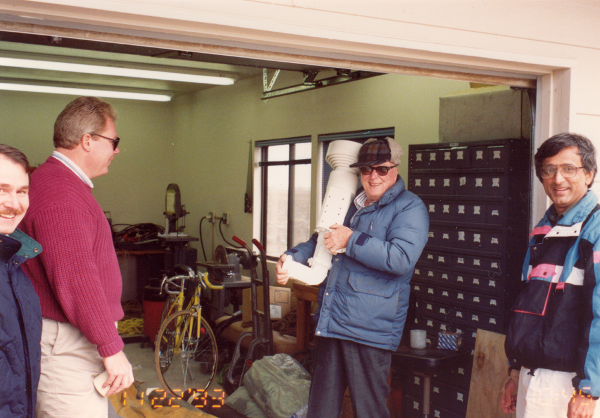
In the following picture, Gene is moving the second FPS-18 transmitter cabinet (obtained from NSSL surplus) into place as the two transmitter conversion got underway in late 1994. On the left side of the picture are technician Ken Pattison and engineer Dave Brunkow.
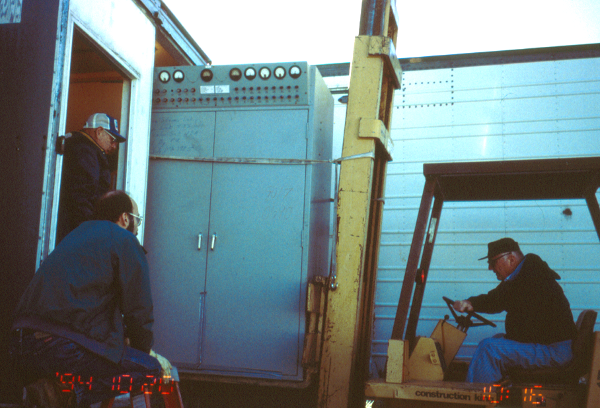
A new dual channel rotary waveguide joint was needed to pass the waveguides from the two transmitters up to the rotating portion of the antenna. The dual channel joint (painted gray) is visible on the table just behind Gene in the final picture. At the time of this picture, he was designing the mounting arrangement that would be used to install the dual channel joint inside the CHILL antenna pedestal.
